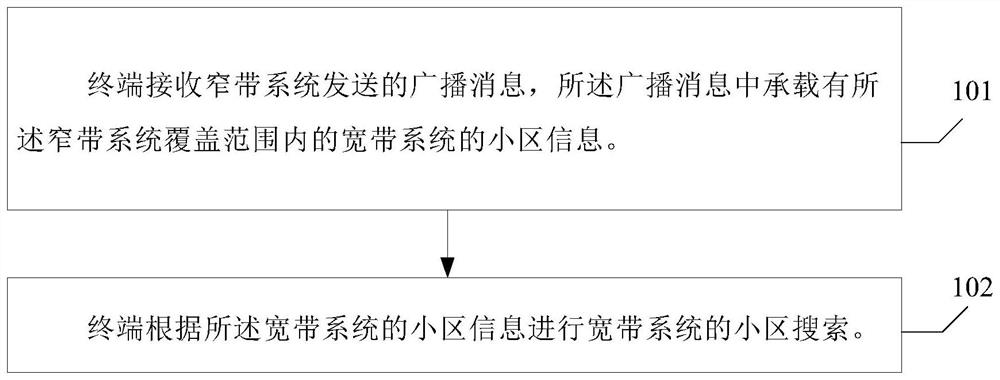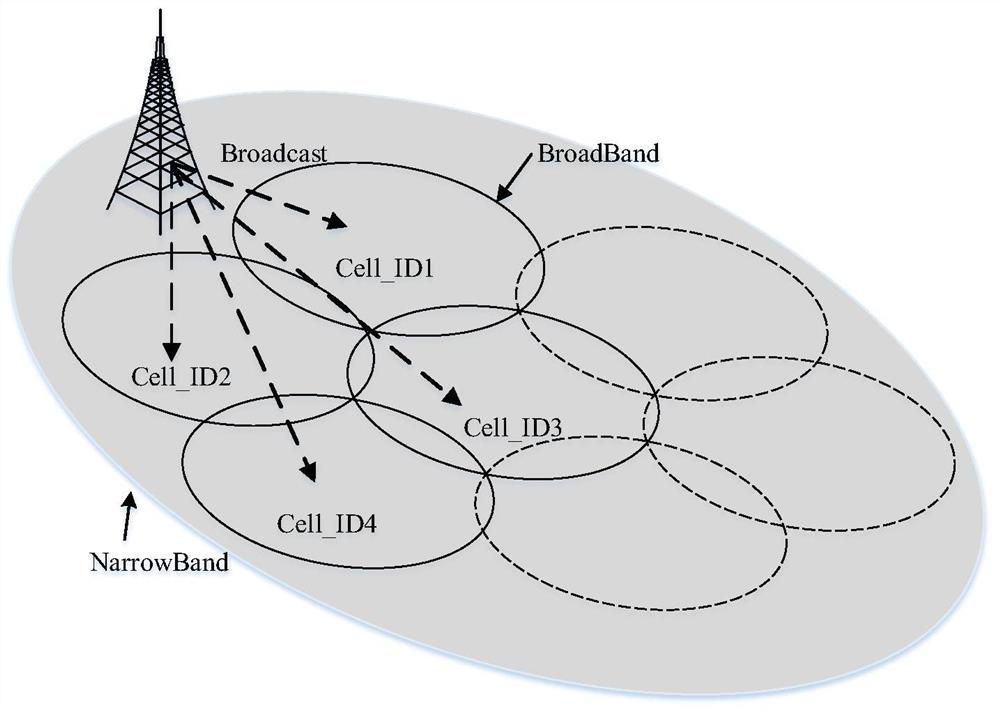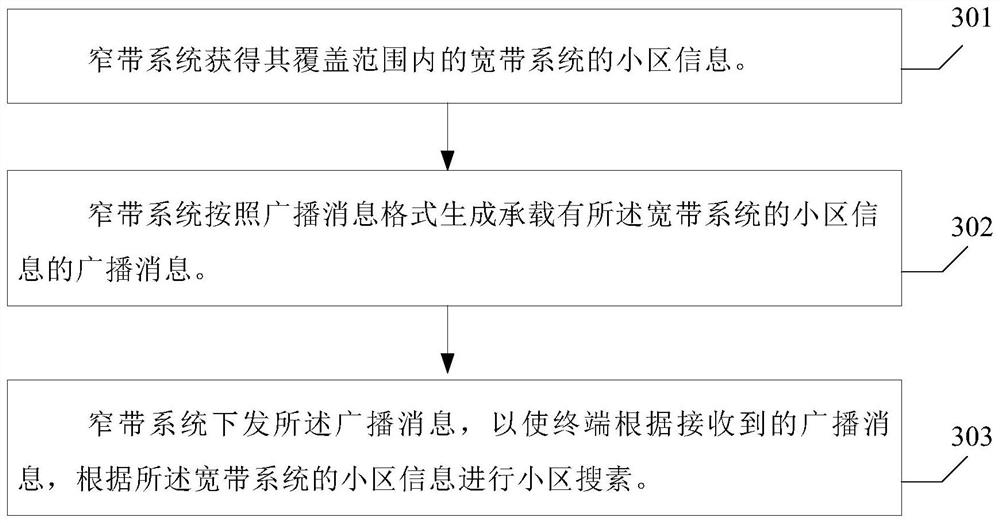A cell search method and device for narrowband assisted broadband
A cell search and narrowband technology, which is applied in the communication field, can solve the problems of large amount of related processing calculations, large blind detection range, and aggravated cell search calculations.
- Summary
- Abstract
- Description
- Claims
- Application Information
AI Technical Summary
Problems solved by technology
Method used
Image
Examples
example 1
[0107] Example 1, the broadcast message delivered by the narrowband system carries the working frequency band index (Band 33) of the broadband system within its coverage. The terminal demodulates the working frequency band index from the narrowband broadcast message, and determines the working frequency band of the broadband system as 1900MHz-1920MHz according to the index; assuming that the terminal itself supports frequency bands 33, 38 (2570MHz-2620MHz) and 40 (2300MHz- 2400MHz), however, using the first implementation method, the terminal directly scans for signals within 1900MHz-1920MHz without a full scan, that is, the terminal no longer needs to scan in all the frequency bands it supports, thus reducing the frequency of scanning range, which reduces the amount of subsequent calculations.
[0108] The second implementation of step 102 is that the cell information of the broadband system includes: a cell identifier; and the terminal searches for a cell of the broadband sy...
example 2
[0114] Example 2, the broadcast message delivered by the narrowband system carries the cell identifiers of the broadband systems within its coverage (here set as 48, 51, 54, 57, 60, 63). The terminal demodulates these cell identities from the narrowband broadcast message, and then calculates possible cell group numbers N1={0} and possible cell group numbers N2={16,17,18,19 from these cell identities ,20,21}; From the number in the group to 0, you can look up the table to get the root serial number Generate a local PSS sequence based on this value, perform sliding correlation with the scanned sequence, find the maximum point of the correlation peak, and the position of the maximum point is the timing position; then the local SSS sequence can be generated from the group number and the group number in the set N2, and the Each SSS is slidingly correlated with the received sequence, and the maximum point of the correlation peak is found, corresponding to the position of the maximu...
example 3
[0121] Example 3, the broadcast message issued by the narrowband system carries the working frequency band index (Band 33) of the broadband system within its coverage and the cell identity of the broadband system (here set as 48, 51, 54, 57, 60, 63) . The terminal demodulates the working frequency band index and cell ID from the narrowband broadcast message, and determines the working frequency band of the broadband system as 1900MHz-1920MHz according to the index; assuming that the terminal itself supports frequency band 33, frequency band 38 (2570MHz-2620MHz) and frequency band 40 (2300MHz-2400MHz), however, using the third implementation method, the terminal directly scans for signals within 1900MHz-1920MHz without the need for a full scan, that is, the terminal no longer needs to scan in all the frequency bands it supports, thus The scanning range is reduced, which also reduces the amount of subsequent calculations. In addition, the terminal can calculate the possible cel...
PUM
 Login to View More
Login to View More Abstract
Description
Claims
Application Information
 Login to View More
Login to View More - R&D
- Intellectual Property
- Life Sciences
- Materials
- Tech Scout
- Unparalleled Data Quality
- Higher Quality Content
- 60% Fewer Hallucinations
Browse by: Latest US Patents, China's latest patents, Technical Efficacy Thesaurus, Application Domain, Technology Topic, Popular Technical Reports.
© 2025 PatSnap. All rights reserved.Legal|Privacy policy|Modern Slavery Act Transparency Statement|Sitemap|About US| Contact US: help@patsnap.com



